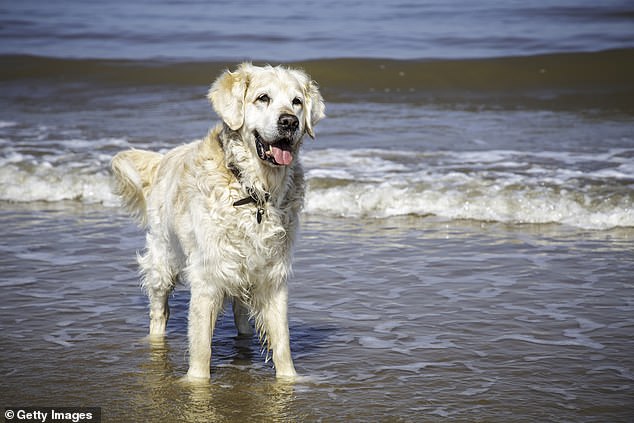Dog owners heading to the coast this summer have been issued a warning as a strict ban comes into force across UK beaches.
Hundreds of beaches have brought in dog bans that were rolled out on May 1 and are set to last until the end of September.
Some beaches have banned dogs completely, while others are only allowing them during certain hours or if they’re kept on leads.
Additionally, certain beaches only impose restrictions during peak hours, such as from 10am to 6pm.
The rules vary depending on the area, but anyone caught breaking them could face a £100 fine on the spot – and up to £1,000 if it goes to court.
The seasonal restrictions are designed to keep beaches clean and safe during the busy summer months, with locals using a Public Space Protection Order (PSPO) to enforce the rules.
Chris Maxted, who runs a dog gate firm called Dog-G8, explained: ‘Seasonal dog bans on UK beaches are a practical measure to protect water quality and maintain the Blue Flag status that many coastal areas value.
‘Dog fouling and urine can have a significant impact on water quality, making it unsuitable for swimming.

Hundreds of UK beaches have brought in dog bans that were rolled out on May 1 and are set to last until the end of September
‘Public spaces protection orders allow councils to enforce beach bans during peak seasons to reduce contamination from dog fouling.
‘These rules aim to create a safer and cleaner environment for everyone, while making sure coastal waters remain suitable for bathing.’
Most beaches allow dogs between October and April, he added – but enforce the orders in the summer months.
Maxted continued: ‘It’s important for dog owners to check before visiting beaches, as the rules can vary significantly.
‘Some areas will implement complete bans, while others impose partial bans, such as requiring dogs to be kept on leads or limiting them to promenades.’
Despite the strict ban coming into force, there is still an abundance of coastal areas to explore where dogs are welcome all year round.
Devon, for example, has a whopping 79 dog-friendly beaches, so even with the bans in place, there’s still plenty of coastline to enjoy with your pooch across the UK.
Guide dogs, on the other hand, are allowed on all beaches – but only if they’re working, wearing a harness, and on a lead.

The rules vary depending on the area, but anyone caught breaking them could face a £100 fine on the spot – and up to £1,000 if it goes to court

Most beaches allow dogs between October and April, he added – but enforce the orders in the summer months
The summer dog ban was first brought in by Weymouth in 2019, prompting dozens of beaches to follow suit in subsequent years, especially as tourist numbers rise over the warmer months.
Most local council websites have up-to-date info on which beaches are dog-friendly and when.
Maxted added: ‘To find out which beaches are open all year round and dog-friendly, it’s best to check your local council website.
‘Most councils provide up-to-date information on beach regulations, including any seasonal restrictions or rules regarding pets, so you can plan your visit accordingly.’
It comes as Tower Hamlets council are introducing a strict set of rules for dog owners after a string of attacks left an 11-year-old girl with life-changing injuries and saw two Cane Corso’s shot dead after mauling a woman.
Under the new rules, which were approved under a Public Spaces Protection Order (PSPO), dogs will still be allowed to play freely off-lead in all parks and green spaces in the borough.
However, dogs will be banned from certain areas such as gated children’s play areas and sports areas and there will be a requirement for a maximum of four dogs per person, unless they have a professional council-issued dog walker licence.
This article was originally published by a www.dailymail.co.uk . Read the Original article here. .

